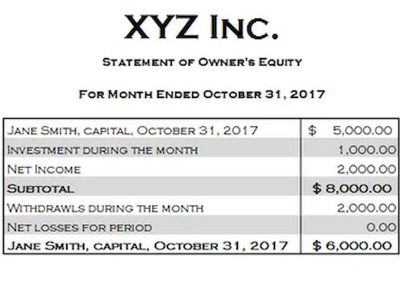
We believe everyone should be able to make financial decisions with confidence.

CapEx is important for companies to grow and maintain their business by investing in new property, plant, equipment (PP&E), products, and technology. Financial analysts and investors pay close attention to a company’s capital expenditures, depreciation expense meaning as they do not initially appear on the income statement but can have a significant impact on cash flow. For the manufacturing industry, depreciation is predominantly involved in the valuation of machinery and equipment.
Operating Income: Understanding its Significance in Business Finance
Depreciation is the process of allocating the cost of an asset over its useful life. Depreciation is calculated by dividing an asset cost by how long it will be used or put into use, then subtracting one from that number. For these calculations, you need to know the asset’s cost, residual value, and estimated productive life. The assumption behind accelerated depreciation is that the fixed asset drops more of its value in the earlier stages of its lifecycle, allowing for more deductions earlier on. Assuming the company pays for the PP&E in all cash, that $100k in cash is now out the door, no matter what, but the income statement will state otherwise to abide by accrual accounting standards. The units of production method recognizes depreciation based on the perceived usage (“wear and tear”) of the fixed asset (PP&E).

Depreciation is a way for businesses and individuals to account for the fact that some assets lose value over time. A 2x factor declining balance is known as a double-declining balance depreciation schedule. As it is a popular option with accelerated depreciation schedules, it is often referred to as the “double declining balance” method. When a long-term asset is purchased, it should be capitalized instead of being expensed in the accounting period it is purchased in. Assuming the asset will be economically useful and generate returns beyond that initial accounting period, expensing it immediately would overstate the expense in that period and understate it in all future periods.
How to Calculate Declining Balance Depreciation
Prepaid expenses are initially recorded as assets, but their value is expensed over time onto the income statement. Unlike conventional expenses, the business will receive something of value from the prepaid expense over the course of several accounting periods. A capital expenditure (“CapEx” for short) is the payment with either cash or credit to purchase long-term physical or fixed assets used in a business’s operations. The expenditures are capitalized (i.e., not expensed directly on a company’s income statement) on the balance sheet and are considered an investment by a company in expanding its business. As to why businesses use it, depreciation expense can be a significant benefit when it comes to financial planning and tax obligations.

In financial planning, depreciation serves as a way to ensure companies take the gradual wear and tear of their assets into account. By consistently depreciating their assets, businesses can avoid being suddenly https://www.bookstime.com/ hit with the huge cost of replacing a defunct asset, adding a degree of financial stability. In addition, understanding the rate at which assets depreciate can also inform decisions about when to replace them.
Depreciation Calculation Methods
Businesses are able to take tax deductions on expenses incurred when doing business. But for big-purchase business property, this expense is deducted over time through a process called depreciation. Organizations making large investments in capital assets hope to generate predictable outcomes. The costs and benefits of capital expenditure decisions are usually characterized by a lot of uncertainty. During financial planning, organizations need to account for risks to mitigate potential losses, even though it is not possible to eliminate them. It is important to note that funds spent on repair or in conducting normal maintenance on assets are not considered capital expenditures and should be expensed on the income statement.
If the carrying amount exceeds the recoverable amount, the asset is considered impaired and its value is written down, thus ensuring the asset’s stated value is more aligned with its market value. While depreciation expense can vary depending on the type of asset and the chosen depreciation method, the bottom line remains that it can significantly aid in tax savings. Typically, the cost of an asset is not recognized as an expense all at once in the year it’s purchased, but is spread over the estimated useful life of the asset, in a process known as depreciation. Depreciation expense is thus a key factor in CSR reporting as it provides a more realistic and sustainable outlook of the company’s operations. The depreciation rate for something such as a car will decrease every year because the car loses value with time and driving use. You can comp some of the cost of the initial purchase and maintenance of the vehicle by reporting it as a “depreciable asset” on your business taxes.
♦ Depreciable Cost
In scenarios where the assets don’t generate expected returns, the depreciation expense claimed helps mitigate the impact on the business finances. By allocating costs over time, companies present a more accurate and transparent picture of their financial health. This transparency strengthens stakeholder trust and contributes to a company’s CSR initiatives.
- The business can, therefore, deduct $1,900 in depreciation in each of those 10 years.
- The units of production method, while less common, is particularly useful in industries where an asset’s wear and tear is more closely tied to output production rather than years of use.
- The purchase of an asset such as land or equipment is not considered a simple expense but rather a capital expenditure.
- These expenses must be incurred during the usual course of business and deducted in the year they are incurred.
